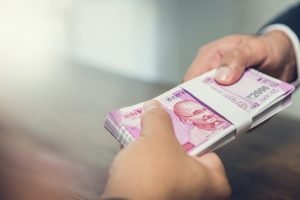In order to address the problem of Base Erosion and Profit Shifting (BEPS), the Organization for Economic Co-operation and Development (OECD) framed various Action Plans. BEPS Action Plan 1 suggested measures to addresses the challenges posed by the Digital Economy. Taking a cue from this Action Plan, India has been a front runner in implementing measures viz., Equalization Levy (EL) and Significant Economic Presence (SEP).
While the provisions pertaining to SEP were introduced in 2018, Finance Act, 2020 has substituted the said provisions. Further, for the purpose of attracting SEP provisions, a threshold was to be prescribed. Recently, the Central Board of Direct Taxes (CBDT) has issued a Notification notifying the threshold for the purpose of applying SEP provision.
What is SEP?
As per Explanation 2A to section 9(1)(i) of the Income-tax Act, 1961 (IT Act), SEP of a non-resident in India shall constitute business connection in India. For this purpose, the SEP means:
- Transaction in respect of any goods, services or property carried out by a non-resident in India including provision of download of data or software in India, if the aggregate of payments arising from such transaction or transactions during the previous year exceeds such amount as may be prescribed; or
- Systematic and continuous soliciting of business activities or engaging in interaction with such number of users as may be prescribed, in India through digital means:”
It further provided that the transactions or activities shall constitute a significant economic presence in India, whether or not the non-resident has a residence or place of business in India or renders services in India or agreement for such transactions/ activities entered in India.
The provision of SEP enlarges the scope of income of non-residents by establishing the business connection of non-residents in India. However, since thresholds were not notified since the introduction of SEP provision, practically the provision remained inoperative.
On 03rd May 2021, CBDT notified a threshold for SEP. This will come into effect from the 01st April 2022. According to the notification issued in the official gazette by CBDT, Ministry of Finance:
- The amount of aggregate payments arising from the transaction(s) in respect of any goods, services or property carried out by a non-resident with any person resident in India, including the provision of download of data/ software in India during the year shall be Rs. 2 crores (approximately USD 2,71,000/-);
- The number of users with whom systematic and continuous business activities are solicited or who are engaged in interaction shall be 3 lakhs.
Our Comments
- CBDT notification is silent on how the profit attribution would be done.
- The threshold of aggregate payment of Rs. 2 crores and user base of 3 lakhs seems quite low considering the user base in India of few e-commerce giants such as Facebook or Google.
- Existing DTAAs will not cover the proposed change unless DTAAs are re-negotiated. Accordingly, non-resident of the treaty jurisdiction can take recourse to the beneficial provision of DTAA. Consequently, the relevance of the amendment may be restricted till the time treaty benefit is available.
- However, non-resident of a non-treaty jurisdiction may need to assess the impact.
- The interplay between Equalisation Levy and SEP needs to be looked into when both the provision is in force parallelly.



